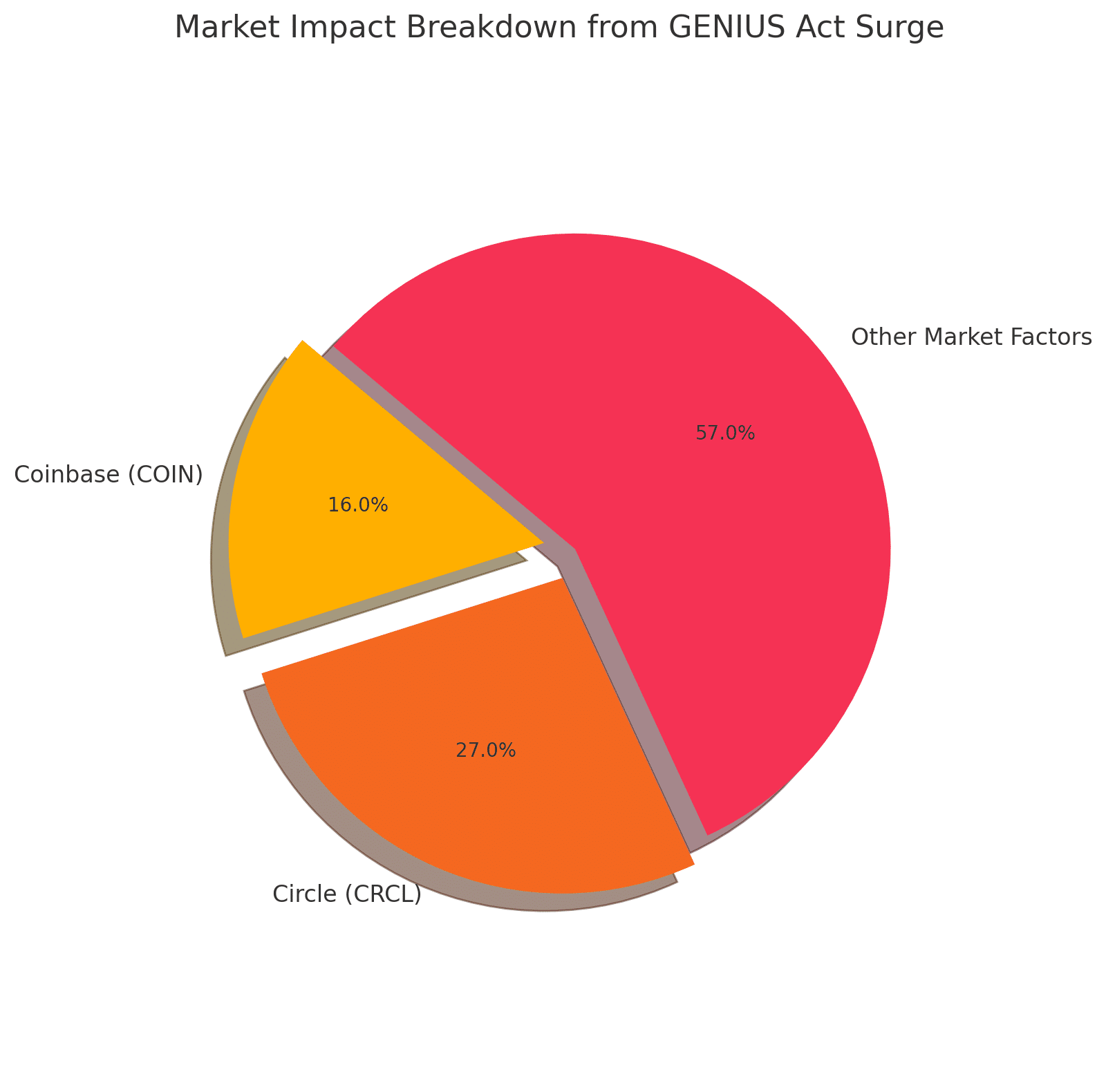The GENIUS Act sprinted through the Senate on June 17 with a 68 to 30 bipartisan margin, handing the crypto industry its first federal stablecoin blueprint. But the victory lap was brief. House leaders are mulling whether to merge the GENIUS Act with the Digital Asset Market CLARITY Act, a broader bill already advanced by two committees.
Two Paths, One Clock
Representative Tom Emmer urges bundling the measures, saying one vote could “lock a full rulebook into place.” President Trump prefers a clean bill, warning that extra baggage could derail summer passage. The decision will shape how quickly the GENIUS Act reaches his desk.
What the Bill Delivers
Under the GENIUS Act, payment stablecoins are neither securities nor commodities. Large issuers report to the Fed or OCC; smaller firms stay under state supervision. Each token must be backed 1:1 by cash or Treasurys, audited monthly, and redeemable on demand, guardrails designed to avoid another algorithmic crash.

Markets Cheer Certainty
Coinbase stock jumped 16 percent to $295, while newly listed Circle rallied 27 percent as traders bet stablecoin clarity will boost fee revenues and USDC volumes. Piper Sandler now projects COIN could touch $400 if the GENIUS Act becomes law.
| Company | Ticker | Price 14 Jun | Price 20 Jun | Change |
|---|---|---|---|---|
| Coinbase | COIN | $255 | $295 | +15.7 % |
| Circle | CRCL | $42 | $53 | +26.2 % |
Political and Ethical Pushback
Progressives like Senators Warren and Merkley argue the carve-out allowing presidential families to invest in stablecoin firms undermines trust. Watchdogs say the House must tighten those ethics gaps before approving the measure.
Fruiful Outlook
Analysts see dollar-denominated stablecoins swelling toward a $2 trillion market within a decade if Congress finalizes the GENIUS Act. Policy researchers estimate that properly regulated tokens could cut remittance fees by 40 percent, saving households billions. Such savings would trickle into emerging markets, broadening financial inclusion.
Conclusion
The coming vote will determine whether the GENIUS Act fast-tracks U.S. leadership in digital dollars or stalls amid partisan bargaining. Investors should closely monitor committee schedules, whip counts, and amendments because even minor language tweaks could ripple overnight through tokenized finance valuations. Either way, the House’s next move will be pivotal for every exchange, fintech, and developer building on stablecoins.
Summary
Fresh off a decisive Senate win, the GENIUS Act now faces a split House: pass it solo or fuse it with the larger CLARITY Act. The bill defines payment stablecoins, demands full reserves, and shields them from SEC and CFTC rules. Markets rallied, Coinbase and Circle surged, yet ethics critics want tighter safeguards. A summer vote will reveal whether Washington finally anchors stablecoin innovation in law.
FAQs
Q1. What makes the law historic?
It is the first bipartisan attempt to give payment stablecoins a dedicated federal framework.
Q2. Does it cover Bitcoin or NFTs?
No. The GENIUS Act targets dollar-pegged stablecoins; other crypto assets remain under existing law.
Q3. When could it pass?
If the House adopts the current text before August, the GENIUS Act could become law this session.
Glossary of Key Terms
GENIUS Act: Guiding and Establishing National Innovation for U.S. Stablecoins Act.
CLARITY Act: Digital Asset Market Clarity Act, a wider market-structure proposal.
Payment Stablecoin: A token fully backed by cash or U.S. Treasurys.
OCC/Fed: Federal regulators overseeing national banks and monetary policy.




















































































































